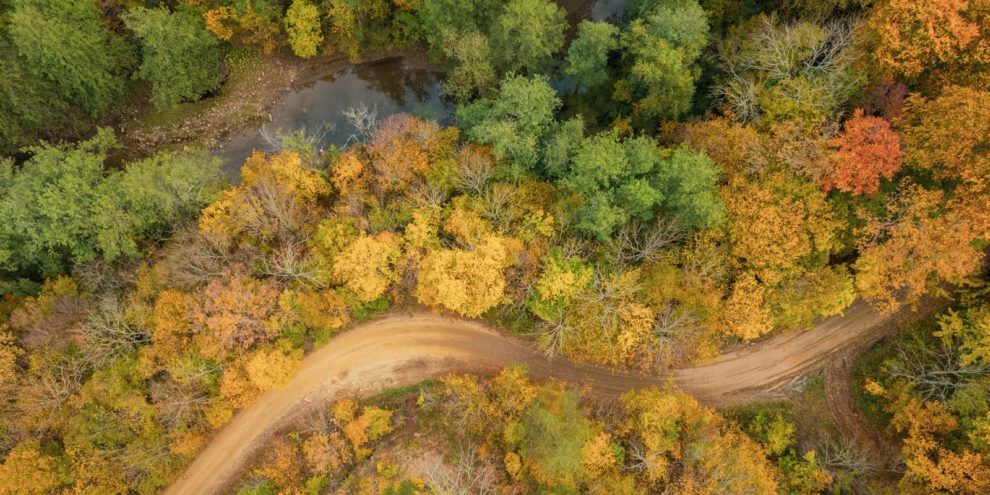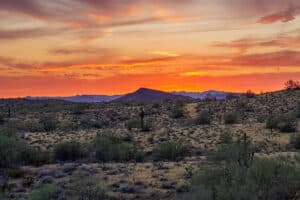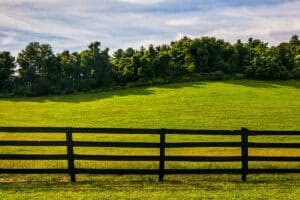“Which mapping software do you use?” This question comes up a lot when I am out showing land, and the people sitting next to me in the Ranger like some feature on the map that is displayed on the iPad. It is not uncommon for a prospective buyer to spend more time staring at the map on the screen in their hands than at the actual land they are there to see.
Dave Milton and I discussed this question on a recent episode of The Land Show. We reminisced about how this facet of the land brokerage business has changed dramatically over the past two decades. When I became a land agent in 2008, it was necessary for me to purchase the county tax plat maps for each county that I was doing business in and carry them around with me in the truck. We then found gazetteers for our state and felt like we struck gold because they identified all the major and minor public roads- and even a few woods roads. All of this was extremely archaic compared to the high-tech way we access map data now.
The smartphone revolutionized how we do maps and mapping, and our ability to navigate to, from, over, and through rural properties in 2021. I feel certain there will be further advancements in geospatial data in the future, but the advancements in the past 13 years have been staggering.
Here are the apps and software that I most commonly use in my day to day work as a land broker. I would like to hear about what works for you in the comments below.
1. MapRight
MapRight is the best $60 I spend every month. If I had a nickel for every time I’ve said that sentence, I could pay for my subscription for a year. This tool allows you to access many different layers, including aerial imagery, topography, FEMA floodplain, county and municipal limits, soils maps, wetlands, and street maps. It allows you to embed pictures, videos, and drone shots. I can embed it in websites, share via email, and print high quality paper maps to take on showings. MapRight also has an app you can access on your smartphone or tablet, and will track you in real time when you are out on a property. I use this mapping tool almost every day. An alternative that many people use is TerraStride, and from what I have seen it offers many similar features to MapRight.
2. LandGlide
LandGlide is the app I use when I’m on the road and want to see who owns a particular property. It is great for providing aerial imagery with county tax plat lines and owners’ names. It provides some basic parcel data and information about the owner. It is very handy and worth the $10 or so it costs each month. LandGlide also allows you to use it to show where you are in real time on the ground. OnX Hunt maps provide similar functions, and it is used by a lot of people in the land brokerage industry.
3. County Geographic Information System (GIS) maps
When you need specific information about tax parcels, sometimes the very best way to get that information is directly from the county tax assessor’s website. In my state of Alabama, almost every county has their GIS maps online. There may be a handful out of our 67 counties that do not have it online, but by far most do. In Mississippi, some of the counties are still slow to put their data online. In some instances you can get data that is not readily available on other sites such as age of structures, square footage, past sales, and deed book and page number of the deeds at the local courthouse.
4. TerraPlat
Southeastern Land Group developed a proprietary app, TerraPlat, for the purpose of allowing people to see all of our listings on one map. You can download from the app store on your smartphone, and it will show you all of Southeastern Land Group’s active listings. You can also use it to navigate properties in real time. We have added features that allow you calculate acreage, measure distances, and save data that is important to you. This is a handy free resource our brokerage provides for you.
5. Google Maps
Google Maps is still my favorite navigation tool when using driving directions and sharing locations of where to meet, etc. In my opinion, it is superior to Apple Maps (which I despise).
6. ArcGIS
When dealing with large land owners, foresters, and institutional clients (REITs, TIMOs), we use ArcGIS. Many of these entities produce shapefiles that allow you to manipulate many layers of data, embed it, and share with others. This is generally utilized by more sophisticated users who need a more robust array of data and mapping capabilities.
7. Other programs
Google Earth is sometimes helpful, particularly when you use a Keyhole Markup Language (KML) file that allows you to pinpoint data about a particular place. United States Geological Survey (USGS) WebSoil Survey allows you to identify different soil characteristics and uses for a specified area of interest. I mostly use it for building soil maps and soil productivity reports for how well soils will grow timber. AcreValue is helpful when you are dealing with open land such as row crop and pasture ground. I have subscribed to them in the past.
8. River Runner
River Runner is probably the coolest map program I have seen this year. This program allows you to select any location in the continental U.S. on a map, and it will show you the path that a raindrop will follow to the ocean. It is interactive and fun, and probably has some helpful uses to land brokers.
I feel certain that the mapping technology we use as land brokers will continue to advance. There are programs that I have seen recently that offer imagery refresh rates as current as the previous 24 hours. As imagery technology improves and the delivery systems get better, I believe we will see enhancements like newer images, Light Detection and Ranging (LIDAR) overlays, greater zoom capabilities, and probably some tech that we do not even know about yet. I have listed the mapping apps and programs that as a land broker I personally prefer to use. Please let me know which ones are your favorites.
This content may not be used or reproduced in any manner whatsoever, in part or in whole, without written permission of LANDTHINK. Use of this content without permission is a violation of federal copyright law. The articles, posts, comments, opinions and information provided by LANDTHINK are for informational and research purposes only and DOES NOT substitute or coincide with the advice of an attorney, accountant, real estate broker or any other licensed real estate professional. LANDTHINK strongly advises visitors and readers to seek their own professional guidance and advice related to buying, investing in or selling real estate.










We use ArcGIS on the forestry and land management side of our business, and recently started using MapRight for both real estate brokerage and management. You are right, MapRight is money well spent and I wish we started using it years ago. It is very user friendly, but at the same time it is powerful.
Do any use current maps? Those all use 7 year old images on my tracts, except for the tract close to Savannah…
Mapright has some maps that should have images that are within the past 6-12 months. Where are your properties located?
On the Savannah River, half way between Savannah and Augusta
We use Terrastride Pro along with the very handy app, allowing the user to download the individual tract maps to an Ipad or phone and use as a GPS to show location on an individual property even when there is no cell service. We also use Arc GIS and the app Explorer, I can download the shape files and access them on my phone and Ipad showing customers the timber types and volumes. Terrastride Pro is one of the simplest, and yet providing enough information on all my tracts. ArcGis requires training, but it is the most comprehensive tool for timberland and Ag land.
Great overview- loved landglide until they seemingly took away the drop-pin feature?
Mapright is our desktop goto tool here at the Joe Williams Group/KW Commercial!
Gaia GPS
Google maps still the best. Satellite views usually most current and being able to accurately measure distance down to a couple yards is important
I use Google and one hunt maps as well as county maps.
If you are in Florida, check out mapwise.com – monthly parcel data updates – in some cases bi-weekly, small counties every 2 months. Search parcels by a wide variety of criteria including sale dates, sale amounts, acres, building sq ft, land use, etc. Map layers include soils, wetlands, recent aerials, fema, topo, etc. MapRight doesn’t publish any info about their parcel update cycles. Our customers depend on updated recent sales. I’m the founder of MapWise.
Landglide or On X Hunt, Mapright, USDA Soil Survey, then locas county appraisal district maps.
Thanks for sharing these tools with us although I still think SiteRecon Inc. is the best Property mapping software available currently for Landscapers and Snow removal professionals. Try to explore this tool as well.